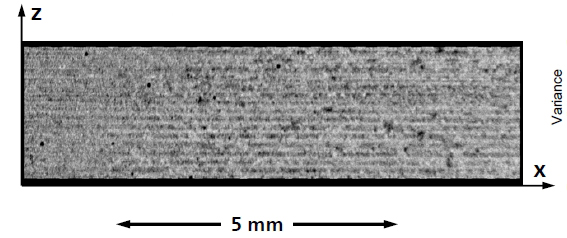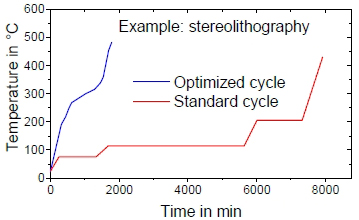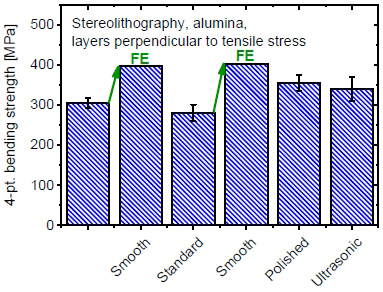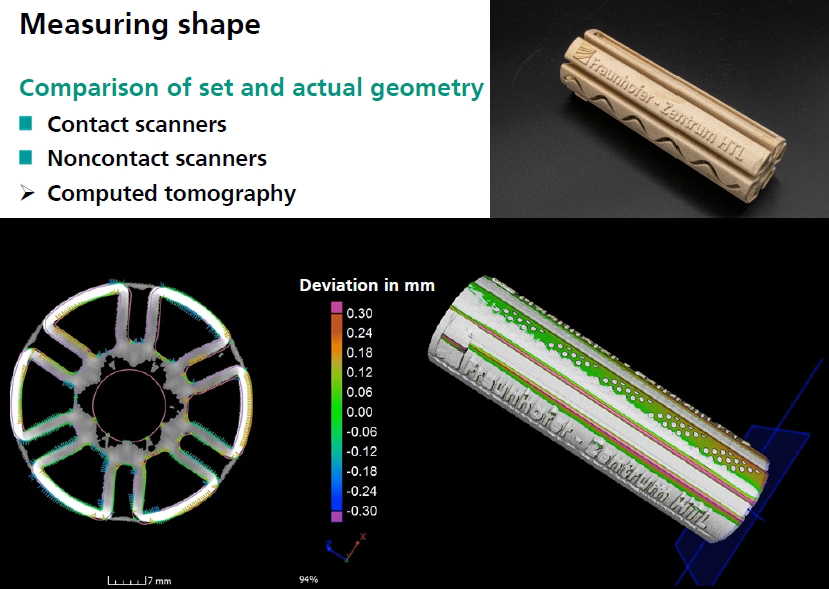To establish additive manufacturing in industrial production, ensuring high and reproducible quality of printed components is essential. The quality is controlled by the homogeneous and defect-free microstructure, compliance with tight dimensional tolerances, and low surface roughness. The same material properties must be achieved as with the currently used conventional production methods.
Quality Management in Additive Manufacturing

Compared to conventional forming processes, printed components often have variations in the density, which negatively affect the mechanical properties of the finished components. The microstructure of additively manufactured components is examined at the HTL on a scale ranging from sub-micrometers to millimeters. The homogeneity of the microstructure is quantitatively measured and evaluated through variance analyses (publication: Investigation of Sintering Mechanism). Special electron microscopy and tomographic techniques are used for the characterization of conventionally produced green bodies. Based on the evaluation, measures for optimizing additive manufacturing processes are derived. This includes, for example, the improvement of feedstocks, adjustment of printing parameters, optimization of heat treatment, or modifications of production equipment.

Various quality problems can also occur during the heat treatment of printed components, such as the introduction of defects during debinding (publication: In Situ Investigation of Debinding) or distortion of components during sintering (publication: Simulation of Sintering). In the latter case, the geometry and dimensions of the components deviate from the specifications. Distortion can be caused by various factors such as gravity, frictional forces, or density and temperature gradients. Systematic tools are used at the HTL to optimize thermal treatment processes (publication: Developing sustainable heat treatment processes systematically, available on request). This ensures reproducible and high-quality components with low scrap rates. At the same time, heat treatment processes are optimized in terms of time and energy efficiency (publication: Radical Time Reduction of Debinding Processes) to save costs and improve the CO2 footprint.

The structure and quality of the surfaces of additively manufactured components can be tested with various methods (e.g., laserscanning microscopy). An evaluation of their influence on component properties is enabled by FE simulations. This can identify damage-inducing stress concentrations on the component surface, and measures to minimize them can be developed. If necessary, free-form surfaces of green bodies, intermediate products, or sintered components can be machined using a 5-axis machining center.
The dimensional accuracy of printed components is another important quality aspect. Modern 3D scanners are used to match the actual component dimensions with the customer's specifications. Internal structures are measured with computed tomography. Where necessary, printed components are machined to achieve the desired dimensions and surface qualities. FE simulation models have been developed to accurately predict the sintering shrinkage of additively manufactured components in all three spatial directions (publication: Simulation of Sintering), to minimize the need for post-processing. Complex-shaped green bodies can be printed to meet the specified dimensions of the finished components after sintering based on the specifications from simulation models.
In addition to the described measures for quality management, process-integrated methods for controlling the component and process quality during the printing process will play an important role in the future. The HTL is developing corresponding methods to monitor the quality in the printing process in situ and to adjust the process parameters directly in case of deviations.
Service Offering:
Improvement of the quality and processability of feedstocks
Optimization of the printing process and post-processing, e.g. drying, debinding and sintering
Analysis and evaluation of defects in components and intermediate products across multiple scales
Characterization and evaluation of the structure and surfaces of components
Machining of freeform surfaces of green bodies, intermediate products and sintered components
Dimensional control of components
FE simulations to consider sintering distortion
Increase in component quality and minimization of rejects
Development of methods for in-situ control of component and process quality
Further Publication:
|
 Fraunhofer ISC, Center for High Temperature Materials and Design HTL, Bayreuth
Fraunhofer ISC, Center for High Temperature Materials and Design HTL, Bayreuth
